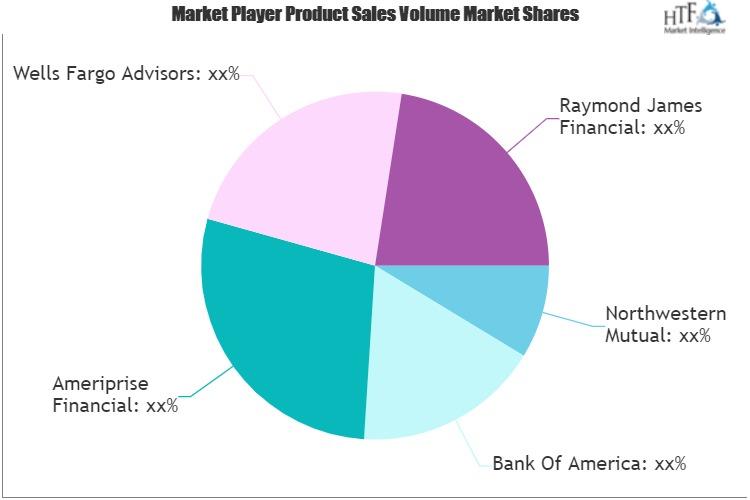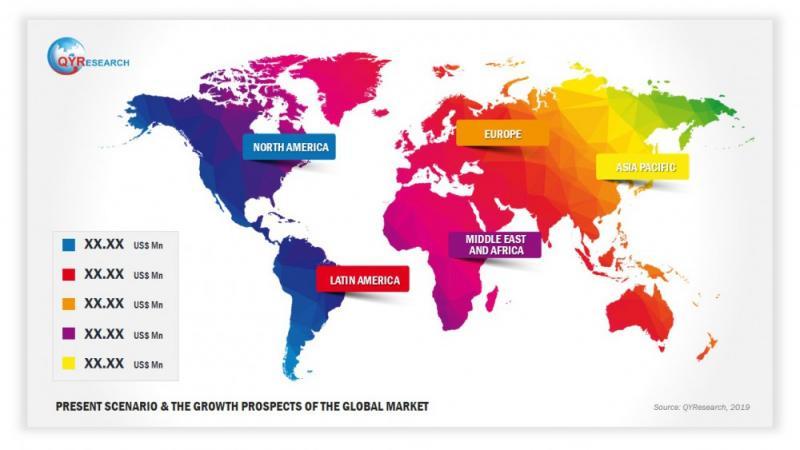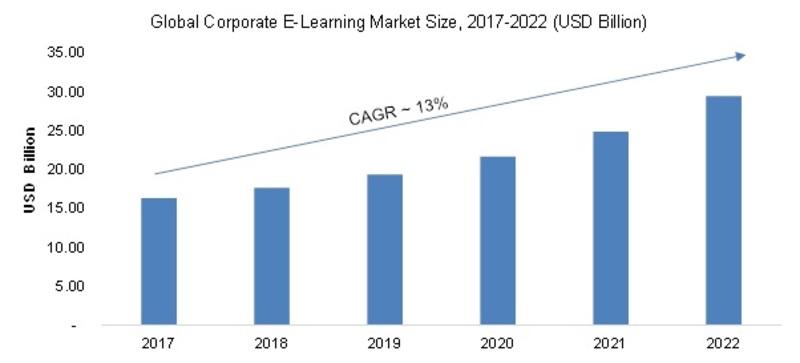Press release
Bunker Fuel Market Size Top Leading Players, Drivers, Industry Share, Competitive Landscape, Future Trends by 2032
Bunker fuel, often referred to as marine fuel, is a specialized fuel used primarily for powering ships and marine vessels. It serves as the lifeblood of the global shipping industry, which transports approximately 90% of the world's trade goods. Bunker fuel has traditionally been composed of heavy, residual oil left after the refining process of crude oil. However, the dynamics of the bunker fuel market are rapidly evolving due to environmental concerns, stringent regulations, and shifting industry preferences. This article explores the current state, trends, drivers, challenges, and future outlook of the bunker fuel market.
Bunker fuel Market Size was valued at USD 124.35 billion in 2023. The Bunker fuel industry is projected to grow from USD 129.69 Billion in 2024 to USD 181.64 billion by 2032, exhibiting a compound annual growth rate (CAGR) of 4.30 % during the forecast period (2024 - 2032).
𝐆𝐞𝐭 𝐅𝐮𝐥𝐥 𝐏𝐃𝐅 𝐒𝐚𝐦𝐩𝐥𝐞 𝐂𝐨𝐩𝐲 𝐨𝐟 𝐑𝐞𝐩𝐨𝐫𝐭: https://www.marketresearchfuture.com/sample_request/10871
Types of Bunker Fuel
Bunker fuels are classified into several types based on their composition and usage:
Residual Fuel Oil (RFO) or Heavy Fuel Oil (HFO): This is the most commonly used type of bunker fuel. HFO is a viscous, dark, heavy oil that requires heating before use. Despite being the least expensive, it is also the most polluting, containing high levels of sulfur and other impurities.
Marine Gas Oil (MGO): MGO is a lighter and cleaner form of bunker fuel. It is often used in areas with stricter emission regulations, such as Emission Control Areas (ECAs). MGO offers a lower sulfur content compared to HFO.
Very Low Sulfur Fuel Oil (VLSFO): VLSFO emerged in response to the International Maritime Organization's (IMO) 2020 regulation, which capped the sulfur content in marine fuels at 0.5%. VLSFO has become a popular choice for ship operators aiming to comply with these standards.
Liquefied Natural Gas (LNG): LNG is increasingly considered a cleaner alternative to traditional bunker fuels. It offers a significant reduction in emissions, including sulfur oxides (SOx), nitrogen oxides (NOx), and particulate matter (PM).
Biofuels and Synthetic Fuels: These are emerging as sustainable options in the bunker fuel market, driven by the need to reduce carbon footprints and meet decarbonization goals.
Market Drivers
Several key factors are propelling the growth and transformation of the bunker fuel market:
Growth in Global Trade: The expansion of global trade and the increasing demand for goods transportation have been significant drivers for the bunker fuel market. The surge in e-commerce, manufacturing, and supply chain activities has bolstered the demand for marine shipping, thereby increasing the need for marine fuel.
Regulatory Changes: Environmental regulations have significantly influenced the market. The IMO 2020 regulation, which mandates a sulfur content limit of 0.5% in marine fuels (down from 3.5%), has reshaped the market landscape. This has led to increased demand for compliant fuels such as VLSFO, MGO, and LNG.
Rising Awareness of Environmental Concerns: Growing awareness of climate change and environmental degradation has prompted the shipping industry to reduce its carbon footprint. The push for cleaner fuels and greener technologies is driving the adoption of alternative fuels like LNG, biofuels, and hydrogen.
Technological Advancements: Innovations in fuel technology, engine design, and emission control systems are paving the way for more efficient and environmentally friendly marine operations. Technologies such as scrubbers (exhaust gas cleaning systems) allow ships to continue using HFO while reducing sulfur emissions.
Challenges in the Bunker Fuel Market
Despite its growth prospects, the bunker fuel market faces several challenges:
Price Volatility: Bunker fuel prices are closely tied to crude oil prices, which are inherently volatile. Price fluctuations can have significant financial implications for ship operators and the overall shipping industry, impacting profitability and cost management.
Regulatory Compliance Costs: Compliance with environmental regulations can be costly. The adoption of compliant fuels, installation of scrubbers, and transition to alternative energy sources require substantial investment, which may not be feasible for all ship operators.
Supply Chain Disruptions: The availability and supply of compliant fuels such as VLSFO and LNG can be inconsistent, especially in certain regions. This can pose logistical challenges for shipping companies, affecting their fuel procurement strategies.
Technological Barriers: While alternative fuels like LNG and biofuels offer environmental benefits, their adoption is hindered by technological barriers, infrastructure limitations, and the need for retrofitting existing ships. Additionally, the lack of a standardized approach to these fuels complicates their integration into the market.
Regional Insights
The bunker fuel market exhibits diverse regional dynamics, influenced by trade routes, regulatory frameworks, and fuel availability:
Asia-Pacific: The Asia-Pacific region dominates the bunker fuel market, driven by the presence of major shipping hubs such as Singapore, China, and South Korea. The region's strong manufacturing base and extensive trade activities contribute to its high fuel demand. Singapore, in particular, remains a key bunkering hub due to its strategic location and robust infrastructure.
Europe: Europe's bunker fuel market is heavily influenced by stringent environmental regulations. The region has several Emission Control Areas (ECAs), where the use of low-sulfur fuels is mandatory. The adoption of LNG as an alternative fuel is growing, supported by increasing investments in LNG bunkering infrastructure.
North America: North America, especially the United States, is experiencing a shift towards cleaner bunker fuels due to regulatory pressures and a focus on reducing greenhouse gas emissions. The U.S. is investing in LNG infrastructure and exploring renewable fuel options to support the transition to greener marine operations.
Middle East & Africa: The Middle East remains a critical supplier of bunker fuel, leveraging its abundant oil reserves. The region's strategic location along key maritime routes, such as the Suez Canal, enhances its importance in the global bunker fuel market. Africa is also witnessing growing demand, driven by expanding trade activities and port developments.
Trends Shaping the Bunker Fuel Market
Several emerging trends are shaping the future of the bunker fuel market:
Decarbonization Initiatives: The push for decarbonization in the shipping industry is intensifying. The IMO's goal of reducing greenhouse gas emissions by 50% by 2050 is driving the industry towards cleaner and more sustainable fuel options, including biofuels, hydrogen, and ammonia.
Expansion of LNG Bunkering: LNG is gaining traction as a transitional marine fuel due to its lower emissions profile. The expansion of LNG bunkering facilities worldwide is supporting its adoption, as more ports and shipping companies invest in LNG infrastructure.
Growth of Biofuels and Green Methanol: Biofuels and green methanol are emerging as viable alternatives to traditional bunker fuels. These fuels are derived from renewable sources, offering a significant reduction in carbon emissions. Their adoption is expected to grow as the industry seeks to meet stricter environmental targets.
Digitalization and Smart Bunkering Solutions: The use of digital technologies in the bunker fuel market is enhancing efficiency and transparency. Blockchain, IoT, and advanced analytics are being employed to streamline fuel procurement, ensure compliance, and optimize fuel consumption.
𝐁𝐫𝐨𝐰𝐬𝐞 𝐈𝐧-𝐝𝐞𝐩𝐭𝐡 𝐌𝐚𝐫𝐤𝐞𝐭 𝐑𝐞𝐬𝐞𝐚𝐫𝐜𝐡 𝐑𝐞𝐩𝐨𝐫𝐭: https://www.marketresearchfuture.com/reports/bunker-fuel-market-10871
Key Players
Chemoil Energy Limited (Hong Kong), Aegean Marine Petroleum Network, Inc. (Switzerland), World Fuel Services Corporation (US), Gulf Agency Company Ltd. (Dubai), Gazpromneft Marine Bunker LLC (Russia), BP Marine Ltd. (UK), Exxon Mobil Corporation (US), Royal Dutch Shell plc (UK), Bunker Holding A/S (Denmark),
Future Outlook and Opportunities
The bunker fuel market is poised for significant transformation in the coming years. Key opportunities lie in:
Investing in Alternative Fuels: The shift towards alternative, low-emission fuels presents a major opportunity for growth. Companies investing in LNG, biofuels, and hydrogen will be well-positioned to meet future regulatory requirements and market demand.
Expanding Infrastructure and Supply Networks: Enhancing the availability of compliant fuels and expanding LNG bunkering facilities are crucial for supporting the market's evolution. Strategic investments in infrastructure will play a key role in facilitating the transition to cleaner marine fuels.
Leveraging Technological Innovations: The integration of new technologies, including digital monitoring systems, emission control technologies, and fuel efficiency solutions, will be pivotal in shaping the future of the bunker fuel market.
𝐁𝐫𝐨𝐰𝐬𝐞 𝐌𝐨𝐫𝐞 𝐑𝐞𝐥𝐚𝐭𝐞𝐝 𝐑𝐞𝐩𝐨𝐫𝐭𝐬:
India Metal Treatment Chemical Market https://www.marketresearchfuture.com/reports/india-metal-treatment-chemical-market-5199
Synthetic Fibers Market https://www.marketresearchfuture.com/reports/synthetic-fibers-market-5284
Aluminum Fluoride Market https://www.marketresearchfuture.com/reports/aluminum-fluoride-market-5315
Water-borne Epoxy Resins Market https://www.marketresearchfuture.com/reports/water-borne-epoxy-resins-market-5334
Nitrile butadiene Rubber Market https://www.marketresearchfuture.com/reports/nitrite-butadiene-rubber-market-5342
Polyethylene Wax Market https://www.marketresearchfuture.com/reports/polyethylene-wax-market-5344
Auto Catalyst Market https://www.marketresearchfuture.com/reports/auto-catalyst-market-5362
𝐂𝐨𝐧𝐭𝐚𝐜𝐭:
Market Research Future®
99 Hudson Street,5Th Floor
New York, New York 10013
United States of America
Phone:
+1 628 258 0071(US)
+44 2035 002 764(UK)
Email: sales@marketresearchfuture.com
Website: https://www.marketresearchfuture.com
𝐀𝐛𝐨𝐮𝐭 𝐌𝐚𝐫𝐤𝐞𝐭 𝐑𝐞𝐬𝐞𝐚𝐫𝐜𝐡 𝐅𝐮𝐭𝐮𝐫𝐞:
At Market Research Future (MRFR), we enable our customers to unravel the complexity of various industries through our Cooked Research Report (CRR), Half-Cooked Research Reports (HCRR), Raw Research Reports (3R), Continuous-Feed Research (CFR), and Market Research Consulting Services. MRFR team have supreme objective to provide the optimum quality market research and intelligence services to our clients. Our market research studies by Components, Application, Logistics and market players for global, regional, and country level market segments, enable our clients to see more, know more, and do more, which help to answer all their most important questions.
Bunker fuel Market Size was valued at USD 124.35 billion in 2023. The Bunker fuel industry is projected to grow from USD 129.69 Billion in 2024 to USD 181.64 billion by 2032, exhibiting a compound annual growth rate (CAGR) of 4.30 % during the forecast period (2024 - 2032).
𝐆𝐞𝐭 𝐅𝐮𝐥𝐥 𝐏𝐃𝐅 𝐒𝐚𝐦𝐩𝐥𝐞 𝐂𝐨𝐩𝐲 𝐨𝐟 𝐑𝐞𝐩𝐨𝐫𝐭: https://www.marketresearchfuture.com/sample_request/10871
Types of Bunker Fuel
Bunker fuels are classified into several types based on their composition and usage:
Residual Fuel Oil (RFO) or Heavy Fuel Oil (HFO): This is the most commonly used type of bunker fuel. HFO is a viscous, dark, heavy oil that requires heating before use. Despite being the least expensive, it is also the most polluting, containing high levels of sulfur and other impurities.
Marine Gas Oil (MGO): MGO is a lighter and cleaner form of bunker fuel. It is often used in areas with stricter emission regulations, such as Emission Control Areas (ECAs). MGO offers a lower sulfur content compared to HFO.
Very Low Sulfur Fuel Oil (VLSFO): VLSFO emerged in response to the International Maritime Organization's (IMO) 2020 regulation, which capped the sulfur content in marine fuels at 0.5%. VLSFO has become a popular choice for ship operators aiming to comply with these standards.
Liquefied Natural Gas (LNG): LNG is increasingly considered a cleaner alternative to traditional bunker fuels. It offers a significant reduction in emissions, including sulfur oxides (SOx), nitrogen oxides (NOx), and particulate matter (PM).
Biofuels and Synthetic Fuels: These are emerging as sustainable options in the bunker fuel market, driven by the need to reduce carbon footprints and meet decarbonization goals.
Market Drivers
Several key factors are propelling the growth and transformation of the bunker fuel market:
Growth in Global Trade: The expansion of global trade and the increasing demand for goods transportation have been significant drivers for the bunker fuel market. The surge in e-commerce, manufacturing, and supply chain activities has bolstered the demand for marine shipping, thereby increasing the need for marine fuel.
Regulatory Changes: Environmental regulations have significantly influenced the market. The IMO 2020 regulation, which mandates a sulfur content limit of 0.5% in marine fuels (down from 3.5%), has reshaped the market landscape. This has led to increased demand for compliant fuels such as VLSFO, MGO, and LNG.
Rising Awareness of Environmental Concerns: Growing awareness of climate change and environmental degradation has prompted the shipping industry to reduce its carbon footprint. The push for cleaner fuels and greener technologies is driving the adoption of alternative fuels like LNG, biofuels, and hydrogen.
Technological Advancements: Innovations in fuel technology, engine design, and emission control systems are paving the way for more efficient and environmentally friendly marine operations. Technologies such as scrubbers (exhaust gas cleaning systems) allow ships to continue using HFO while reducing sulfur emissions.
Challenges in the Bunker Fuel Market
Despite its growth prospects, the bunker fuel market faces several challenges:
Price Volatility: Bunker fuel prices are closely tied to crude oil prices, which are inherently volatile. Price fluctuations can have significant financial implications for ship operators and the overall shipping industry, impacting profitability and cost management.
Regulatory Compliance Costs: Compliance with environmental regulations can be costly. The adoption of compliant fuels, installation of scrubbers, and transition to alternative energy sources require substantial investment, which may not be feasible for all ship operators.
Supply Chain Disruptions: The availability and supply of compliant fuels such as VLSFO and LNG can be inconsistent, especially in certain regions. This can pose logistical challenges for shipping companies, affecting their fuel procurement strategies.
Technological Barriers: While alternative fuels like LNG and biofuels offer environmental benefits, their adoption is hindered by technological barriers, infrastructure limitations, and the need for retrofitting existing ships. Additionally, the lack of a standardized approach to these fuels complicates their integration into the market.
Regional Insights
The bunker fuel market exhibits diverse regional dynamics, influenced by trade routes, regulatory frameworks, and fuel availability:
Asia-Pacific: The Asia-Pacific region dominates the bunker fuel market, driven by the presence of major shipping hubs such as Singapore, China, and South Korea. The region's strong manufacturing base and extensive trade activities contribute to its high fuel demand. Singapore, in particular, remains a key bunkering hub due to its strategic location and robust infrastructure.
Europe: Europe's bunker fuel market is heavily influenced by stringent environmental regulations. The region has several Emission Control Areas (ECAs), where the use of low-sulfur fuels is mandatory. The adoption of LNG as an alternative fuel is growing, supported by increasing investments in LNG bunkering infrastructure.
North America: North America, especially the United States, is experiencing a shift towards cleaner bunker fuels due to regulatory pressures and a focus on reducing greenhouse gas emissions. The U.S. is investing in LNG infrastructure and exploring renewable fuel options to support the transition to greener marine operations.
Middle East & Africa: The Middle East remains a critical supplier of bunker fuel, leveraging its abundant oil reserves. The region's strategic location along key maritime routes, such as the Suez Canal, enhances its importance in the global bunker fuel market. Africa is also witnessing growing demand, driven by expanding trade activities and port developments.
Trends Shaping the Bunker Fuel Market
Several emerging trends are shaping the future of the bunker fuel market:
Decarbonization Initiatives: The push for decarbonization in the shipping industry is intensifying. The IMO's goal of reducing greenhouse gas emissions by 50% by 2050 is driving the industry towards cleaner and more sustainable fuel options, including biofuels, hydrogen, and ammonia.
Expansion of LNG Bunkering: LNG is gaining traction as a transitional marine fuel due to its lower emissions profile. The expansion of LNG bunkering facilities worldwide is supporting its adoption, as more ports and shipping companies invest in LNG infrastructure.
Growth of Biofuels and Green Methanol: Biofuels and green methanol are emerging as viable alternatives to traditional bunker fuels. These fuels are derived from renewable sources, offering a significant reduction in carbon emissions. Their adoption is expected to grow as the industry seeks to meet stricter environmental targets.
Digitalization and Smart Bunkering Solutions: The use of digital technologies in the bunker fuel market is enhancing efficiency and transparency. Blockchain, IoT, and advanced analytics are being employed to streamline fuel procurement, ensure compliance, and optimize fuel consumption.
𝐁𝐫𝐨𝐰𝐬𝐞 𝐈𝐧-𝐝𝐞𝐩𝐭𝐡 𝐌𝐚𝐫𝐤𝐞𝐭 𝐑𝐞𝐬𝐞𝐚𝐫𝐜𝐡 𝐑𝐞𝐩𝐨𝐫𝐭: https://www.marketresearchfuture.com/reports/bunker-fuel-market-10871
Key Players
Chemoil Energy Limited (Hong Kong), Aegean Marine Petroleum Network, Inc. (Switzerland), World Fuel Services Corporation (US), Gulf Agency Company Ltd. (Dubai), Gazpromneft Marine Bunker LLC (Russia), BP Marine Ltd. (UK), Exxon Mobil Corporation (US), Royal Dutch Shell plc (UK), Bunker Holding A/S (Denmark),
Future Outlook and Opportunities
The bunker fuel market is poised for significant transformation in the coming years. Key opportunities lie in:
Investing in Alternative Fuels: The shift towards alternative, low-emission fuels presents a major opportunity for growth. Companies investing in LNG, biofuels, and hydrogen will be well-positioned to meet future regulatory requirements and market demand.
Expanding Infrastructure and Supply Networks: Enhancing the availability of compliant fuels and expanding LNG bunkering facilities are crucial for supporting the market's evolution. Strategic investments in infrastructure will play a key role in facilitating the transition to cleaner marine fuels.
Leveraging Technological Innovations: The integration of new technologies, including digital monitoring systems, emission control technologies, and fuel efficiency solutions, will be pivotal in shaping the future of the bunker fuel market.
𝐁𝐫𝐨𝐰𝐬𝐞 𝐌𝐨𝐫𝐞 𝐑𝐞𝐥𝐚𝐭𝐞𝐝 𝐑𝐞𝐩𝐨𝐫𝐭𝐬:
India Metal Treatment Chemical Market https://www.marketresearchfuture.com/reports/india-metal-treatment-chemical-market-5199
Synthetic Fibers Market https://www.marketresearchfuture.com/reports/synthetic-fibers-market-5284
Aluminum Fluoride Market https://www.marketresearchfuture.com/reports/aluminum-fluoride-market-5315
Water-borne Epoxy Resins Market https://www.marketresearchfuture.com/reports/water-borne-epoxy-resins-market-5334
Nitrile butadiene Rubber Market https://www.marketresearchfuture.com/reports/nitrite-butadiene-rubber-market-5342
Polyethylene Wax Market https://www.marketresearchfuture.com/reports/polyethylene-wax-market-5344
Auto Catalyst Market https://www.marketresearchfuture.com/reports/auto-catalyst-market-5362
𝐂𝐨𝐧𝐭𝐚𝐜𝐭:
Market Research Future®
99 Hudson Street,5Th Floor
New York, New York 10013
United States of America
Phone:
+1 628 258 0071(US)
+44 2035 002 764(UK)
Email: sales@marketresearchfuture.com
Website: https://www.marketresearchfuture.com
𝐀𝐛𝐨𝐮𝐭 𝐌𝐚𝐫𝐤𝐞𝐭 𝐑𝐞𝐬𝐞𝐚𝐫𝐜𝐡 𝐅𝐮𝐭𝐮𝐫𝐞:
At Market Research Future (MRFR), we enable our customers to unravel the complexity of various industries through our Cooked Research Report (CRR), Half-Cooked Research Reports (HCRR), Raw Research Reports (3R), Continuous-Feed Research (CFR), and Market Research Consulting Services. MRFR team have supreme objective to provide the optimum quality market research and intelligence services to our clients. Our market research studies by Components, Application, Logistics and market players for global, regional, and country level market segments, enable our clients to see more, know more, and do more, which help to answer all their most important questions.
Permanent link to this press release:
Copy
Please set a link in the press area of your homepage
to this press release on woodPRI. woodPRI disclaims liability for any content contained in
this release.
Recommend

/newsMicroencapsulation Market Deep Analysis on Key Players - Dow Corning, Encapsys, Syngenta Crop Protection, Evonik Industries, 3M and Bayer
Market Study Report Adds Global Microencapsulation Market Size, Status and Forecast 2024 added to its database. The report provides key statistics on the current state of the industry and other analytical data to understand the market.
Extensive research is required for choosing the appropriate cor...

/newsGermany Airbag Market Size 2023: Global Share, Industry And Report Analysis By 2030 | Hyundai Mobis Co., Ltd. Key Safety Systems, Inc. Robert Bosch GmbH
Germany airbag market is expected to grow at a CAGR of around 6% during the forecast period. Germany Airbag Market research report refers to gathering and analyzing significant market data serve as best medium for various industry players to launch novel product or service. It is vital for key firms...

/newsSecurities Brokerages And Stock Exchanges Market Outlook 2021: Big Things are Happening
A new intelligence report released by HTF MI with title "Global Securities Brokerages And Stock Exchanges Market Survey & Outlook" is designed covering micro level of analysis by Insurers and key business segments, offerings and sales channels. The Global Securities Brokerages And Stock Exchange...

/newsRenewable Chemicals Market Emerging Trends and Competitive Landscape Forecast to 2028
The renewable chemicals market was valued at US$ 80,566.30 million in 2021 and is projected to reach US$ 1,76,750.76 million by 2028 it is expected to grow at a CAGR of 11.9% from 2021 to 2028. The research report focuses on the current market trends, opportunities, future potential of the market, a...

/newsHow Coronavirus is Impacting Cold Brew Coffee, Global Market Volume Analysis, Size, Share and Key Trends 2020-2026
"Market Latest Research Report 2020:
Los Angles United States, February 2020: The Cold Brew Coffee market has been garnering remarkable momentum in the recent years. The steadily escalating demand due to improving purchasing power is projected to bode well for the global market. QY Research's lates...

/newsCorporate E-Learning Market - Global Industry Size, Share, Key Players Analysis that are Infor, SkillSoft Corporation, Adrenna, CERTPOINT Systems and others with Regional Forecast to 2022
Overview:
E-Learning is used to enhance the learning procedures for newer job requirements and to make employees sound about the internal and external changes in the market and respective organizations. This method has created considerable differences in the ways of training and developing employee...
